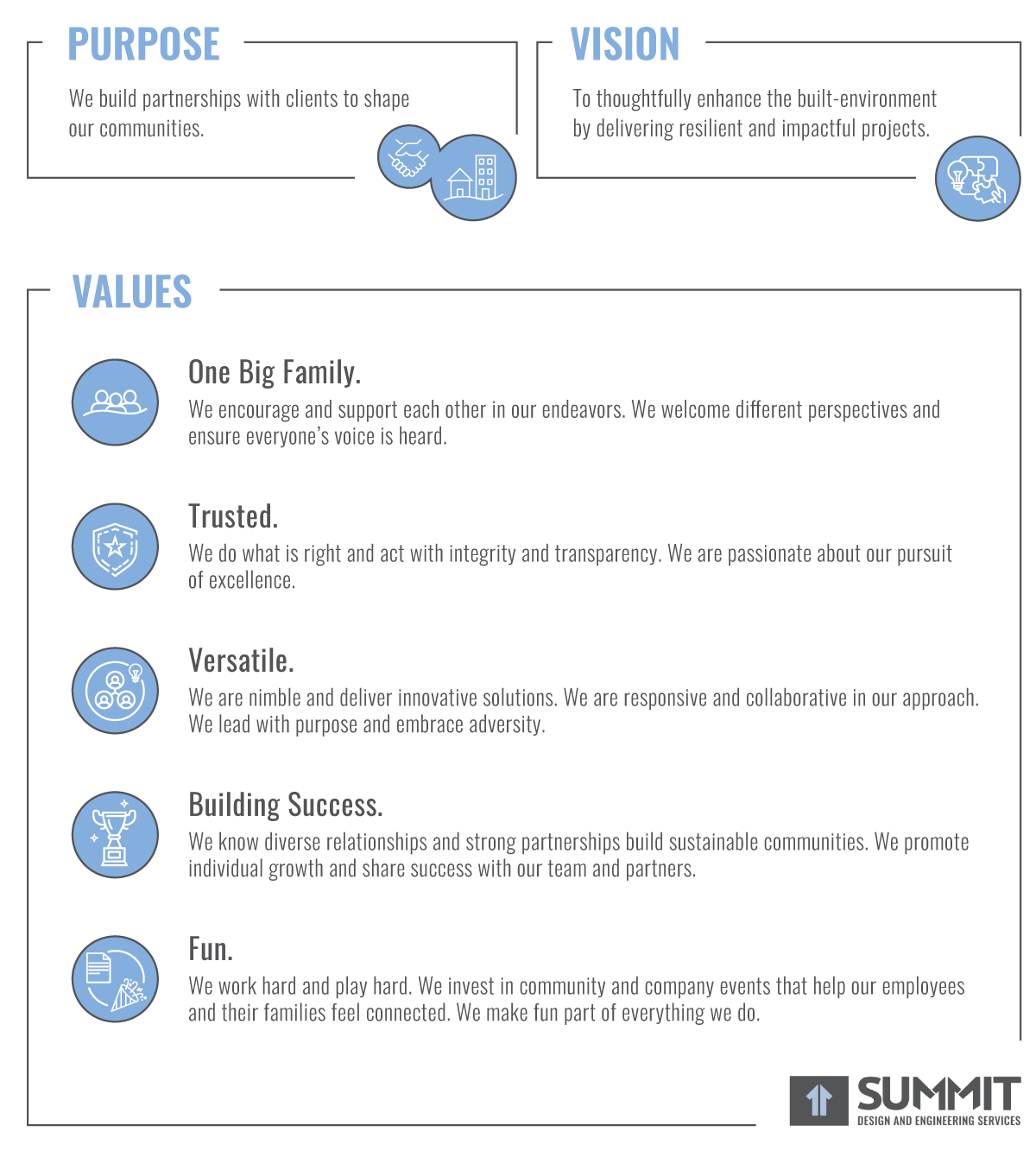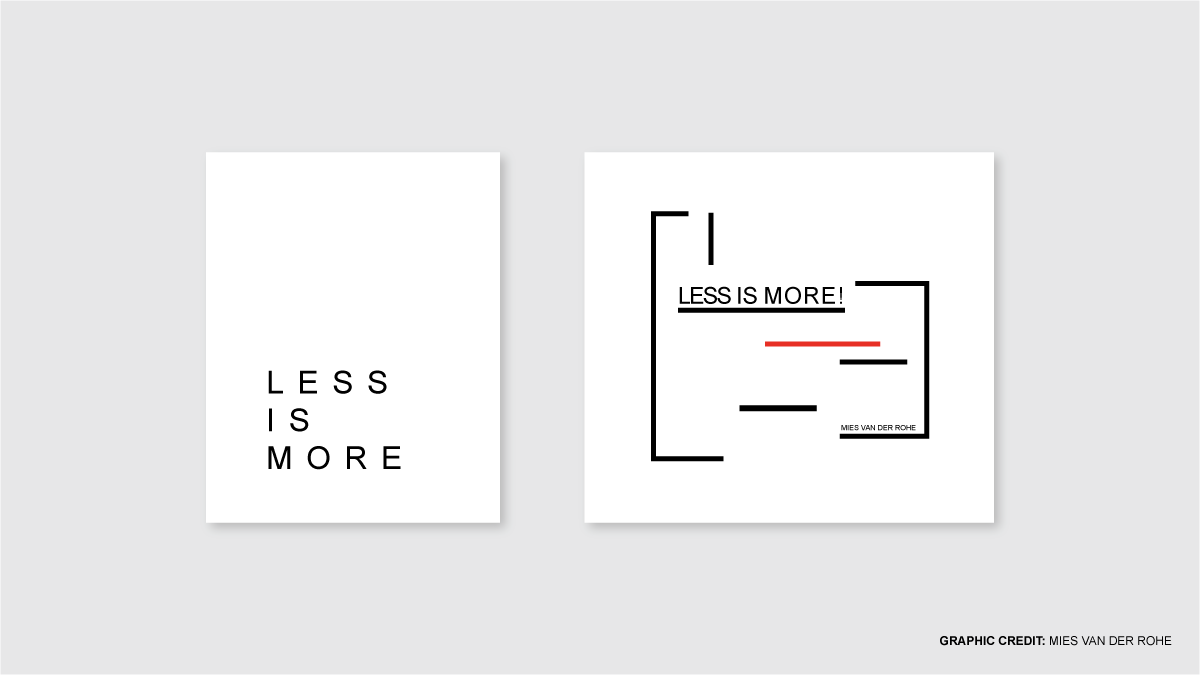A continuation of With Purpose by Matt Bales. http://gjf.02a.myftpupload.com/with-purpose/
A famous Architect once said, “Less is more.” This described his approach to architecture that led the way to a modernist style centered around minimalism. It’s not to say that things are less important, but instead an emphasis on detail without all the “fluff.” He became known for his tactic to arrange components of a building to create extreme simplicity, without sacrificing aesthetics.
Mies Van Der Rohe was a master at this, creating some of the most popular buildings around the world, one of his most famous being the Barcelona Pavilion. His extraction of elements within the space down to their simplest forms juxtaposed the elegant details, highlighting them. He became known for the terms “less is more” and “God is in the details.”
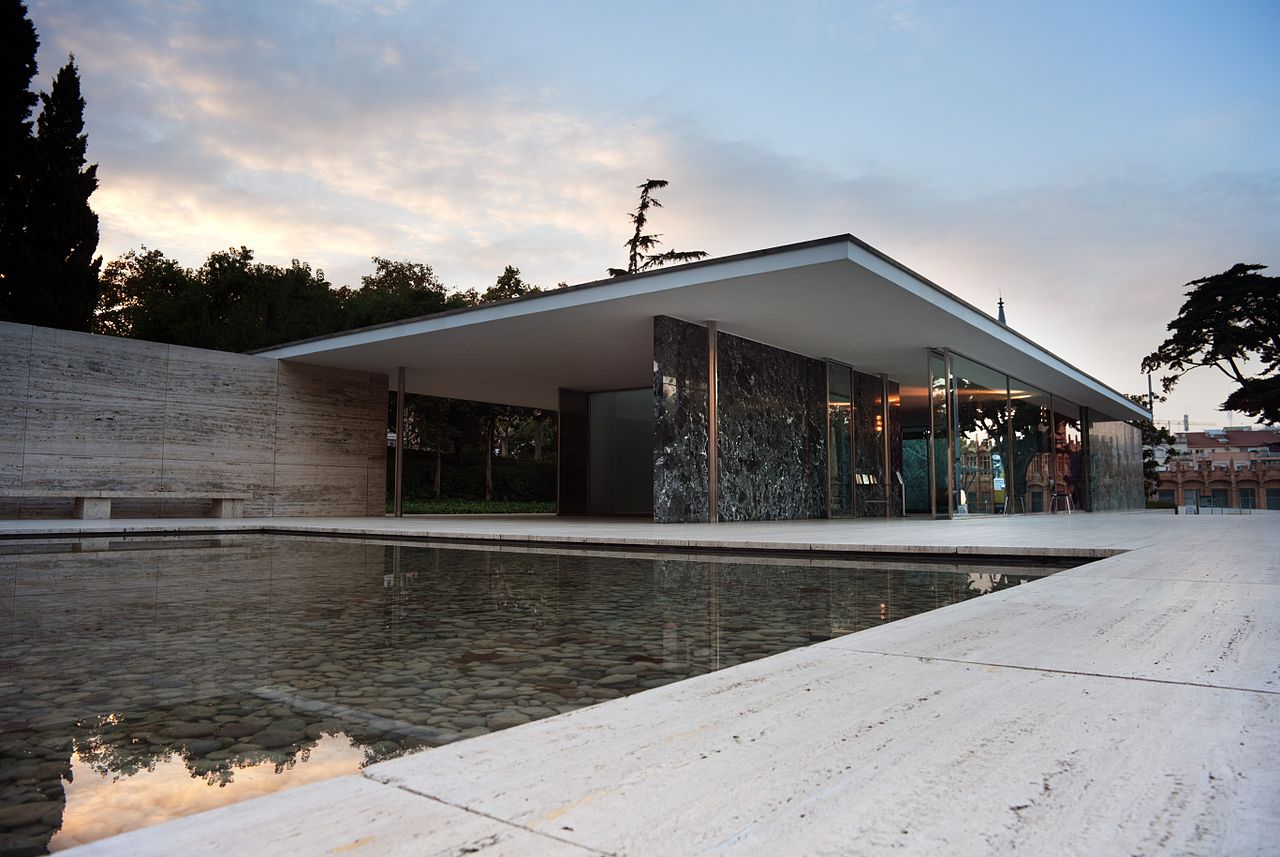
Photo Credit: Ashley Pomeroy at English Wikipedia.
The aspects of minimalism can be applied to various forms of communication. Whereas Architecture is an expression of art, core values are an expression of a person or company’s fundamental beliefs. They guide behavior and direction, both internally and externally. So how do you come up with something that works for everyone and can be easily understood by all? Simplify it.
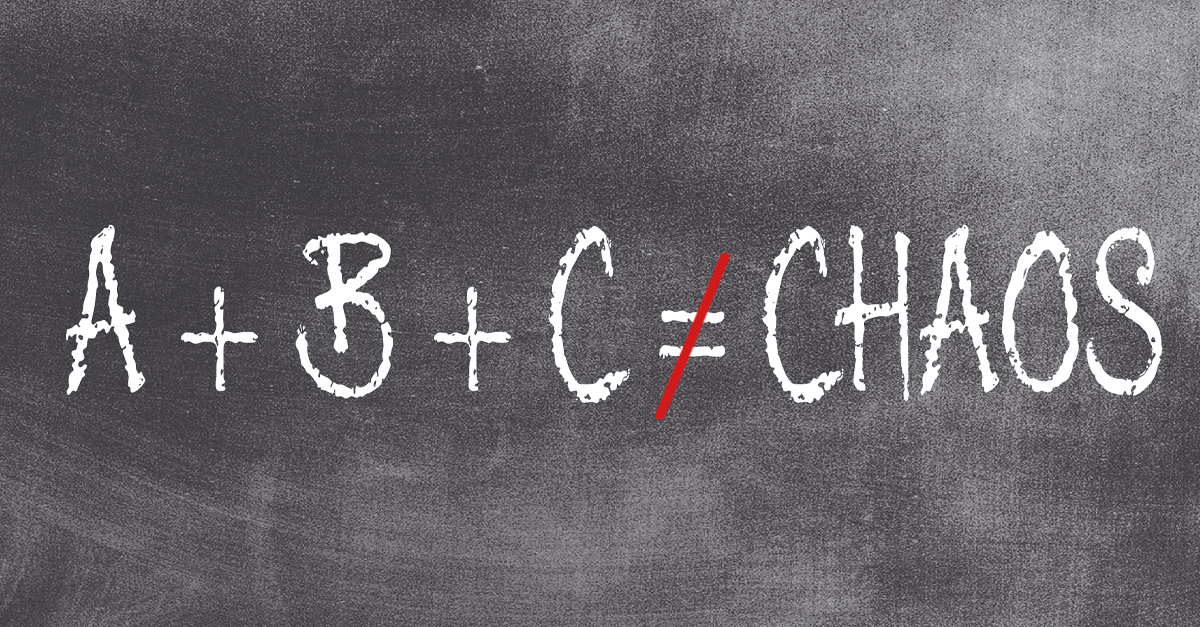
Accuracy + Brevity + Clarity ≠ Chaos
When things are in chaos, there is complete disorder and confusion. Things appear random and disorganized causing us to run around in circles, stumbling over ourselves. To eliminate chaos, we need to take a step back, observe the overall picture, and refocus. Shifting to a method of organization helps establish order and regularity.
This new focus starts with accuracy. It requires information to be correct and free of errors. It demands precision, the quality of being exact. An effective expression requires appropriateness and relevance, both in the content and delivery.

Brevity is the conciseness of expression. It gives maximum information in the minimum number of words. Economy of words eliminates repetition and wordiness. Cutting to the chase allows sentences to have variety in length providing a more pleasurable, organic flow when reading.
Clarity is the ability to be clear. Well planned and logical expression uses simple, familiar, and precise words to avoid ambiguity. This lessens misunderstanding and paves the way to better readability through direct language instead of euphemistic expressions and artificial eloquence.
Equity of all three is required to be successful. A focus on one without the others creates an imbalance of power.
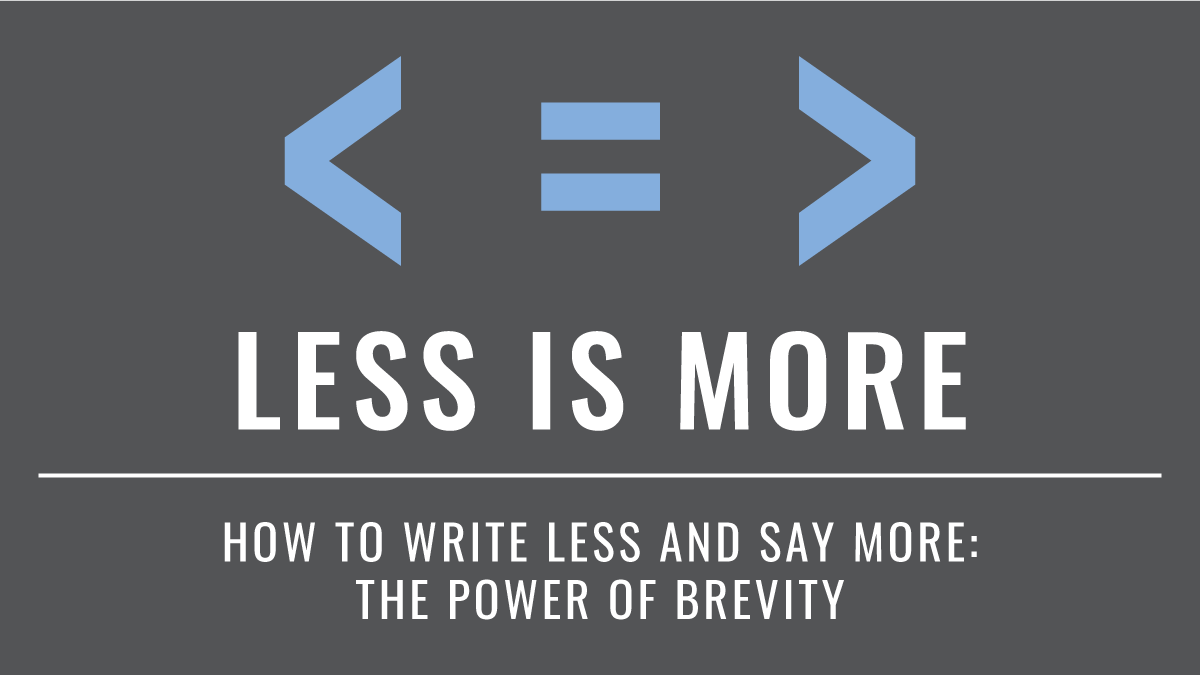
Extracting Brevity
Simply put, get to the point. No need to waffle and add words. The days where we needed to reach word counts are behind us. In today’s age platforms like Twitter actually limit character counts. Articles also have Too Long, Didn’t Read (TLDR) versions explaining the key points.
There is something powerful with simplicity. A single word can stand alone and provide a lot of value. Just as a picture is worth a thousand words, a single word can offer several meanings. Over-embellishing phrases causes sentences to run on, become muddy, and lose clarity.
If there is a simpler way to say something, why not do it?
The thesaurus can be our best friend or our worst enemy. While it helps generate stronger words, we can get lost in the process of selecting them. Sometimes we need to step back and remember what we are trying to say. While there may be value in having flamboyant words, using plain, everyday language ensures the widest range of audiences can understand and resonate with the content.
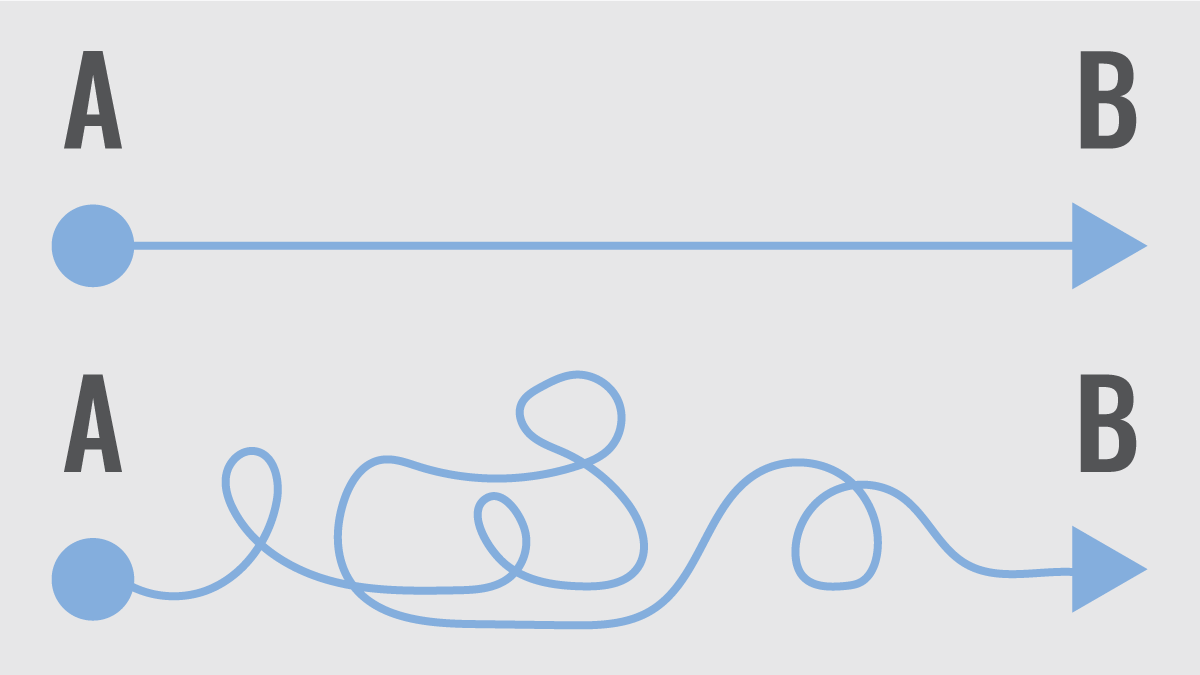
How We Got Here
A collaborative environment with people from different professional backgrounds, various years of experience, and strong personal beliefs promotes constructive debate and deliberation. This was intentional to shape Summit’s Mission, Vision, and Values naturally, a process that is extremely complicated and takes a great deal of time.
As information was brought to the table and phrases were constructed, formulating cohesive statements became challenging trying to incorporate everything. We wanted to use numerous examples and all very specific. As the content grew, we ran in circles, tunnel visioned on swapping words in and out of already complex, disjointed sentences. It filled our brains with confusion, causing us countless times to put it on hold and come back refreshed another day.
Switching to a minimal approach was necessary. The shortest distance between two points is a straight line. Why not step back and rethink about the sentences entirely? Can it be simply expressed and still get our point across?
We reconsidered our method and shifted to think much simpler. Instead of focusing on replacing repetitive and specific words, we formulated generic statements that represented all individuals. A company as diverse as Summit cannot be specific. What applies to one person does not always apply to another. Sometimes, less is more.
The Result
We removed the fluff. Like Mies did with his architecture, Summit’s values were simplified to their minimalist form, giving attention to the detailed meaning behind them. This meant that each value needed to be universally understood, along with its definition, and the number of them limited. What started as a lengthy list, concluded in a significantly reduced result. However, nothing was left out, just combined with another, capturing everything brought to the table day one.
